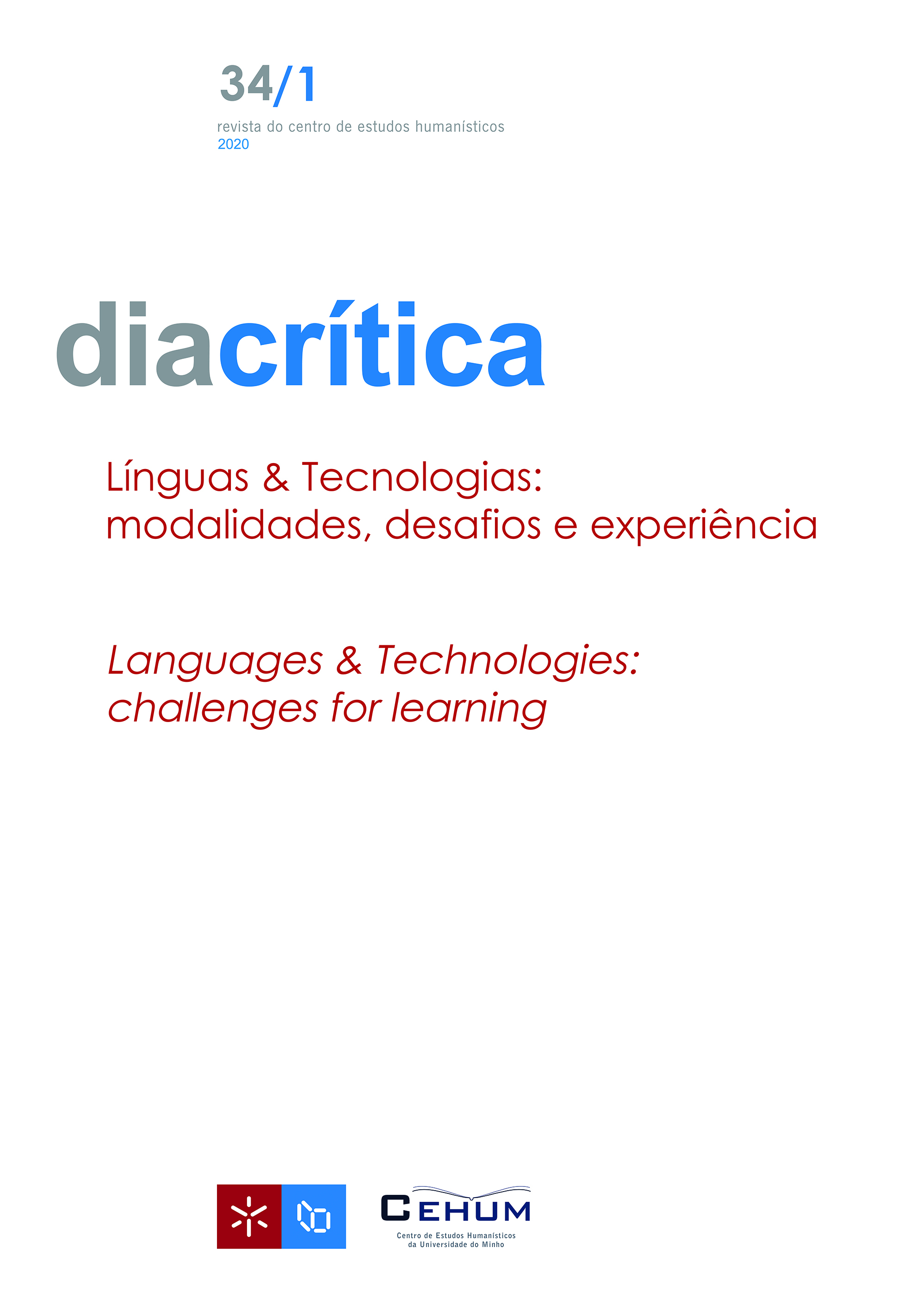Literacy and multimodality in english teaching: Practices in technical and technological courses
DOI:
https://doi.org/10.21814/diacritica.4959Keywords:
Literacy, Multimodality, Semiotic, Teaching Practices, EnglishAbstract
This article aims to show teaching practices in English classes developed in technical and technological courses, to later discuss concepts of literacy and multimodality. The theoretical approaches regard Greimas e Courtés (2008), Dionísio (2006), Kern (2000), Kress (2010) e Kress e Leeuwen(1996) perspectives. Activities were developed in English classes of Chemistry Technical Course and Systems for Internet. For that, many reading strategies in different supports and modes were used, also video production with software, apps, and internet tools, containing subtitle in English and audio recorded by the students. The results were significant because besides showing skills with technological tools, the students used the written text, image, graphical elements, sound and speech. Therefore, from reception practices involvingliteracy, there were productions that constituted a multimodal semiotic system.
References
Dionísio, A. (2006). Gêneros multimodais e multiletramento. In A.M. Karwoskiam, B. Gaydeczka & K. S. Brito (Eds.), Gêneros textuais, reflexões e ensino. Rio de Janeiro: Lucerna.
Greimas, A. & Courtés, J. (2008).
Dicionário de Semiótica. São Paulo: Editora Contexto.
Kern, R. (2000). Literacy and Language teaching. Oxford: Oxford University Press.
Kress, G. (2010). Multimodality: a social semiotic approach to contemporary communication. New York: Routledge.
Kress, G. & Van Leeuwen, T. (1996). Reading Images: the grammar of visual design. London: Routledge.
Soares, M. (1999). Letramento: um tema em três gêneros. São Paulo: Autêntica.
Downloads
Published
How to Cite
Issue
Section
License
Copyright (c) 2023 Carla Luciane Klos Schöninger

This work is licensed under a Creative Commons Attribution-NonCommercial 4.0 International License.










